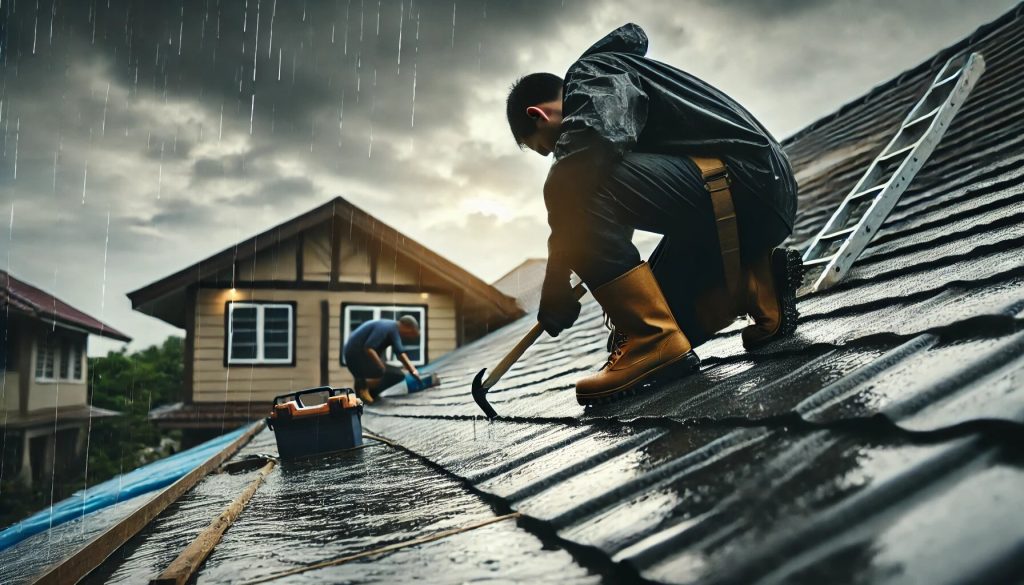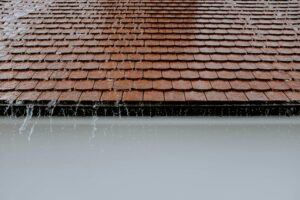The Impact of Weather on Your Roof
Weather can significantly affect the condition and longevity of your roof. From scorching sun to freezing snow, each weather condition poses unique challenges. Understanding these impacts can help you take proactive measures to protect your roof, ensuring it remains in top shape through all seasons.
8 Ways Weather Impacts Your Roof
Sun Exposure
Constant sun exposure can cause significant roof damage. The UV rays can degrade roofing materials, leading to cracks, splits, and warping. Over time, this can compromise the integrity of your roof, requiring more frequent repairs and maintenance. Regular roof inspections can help identify sun damage early, preventing extensive and costly roof repair.
Rain and Moisture
Rain and moisture are common culprits of roof damage. Persistent rain can lead to leaks, especially if your roof has existing vulnerabilities. Moisture can also cause mold and mildew growth, further damaging the roofing materials and underlying structure. Ensuring proper roof drainage and addressing any leaks promptly can help mitigate these issues.
Snow and Ice
Snow and ice pose serious threats to your roof, particularly in regions with heavy snowfall. The weight of accumulated snow can stress your roof, potentially leading to structural damage. Ice dams, which form when snow melts and refreezes, can block water drainage, causing water to seep into your home. Regular roof inspections and timely snow removal are essential to prevent these issues.
Wind
Strong winds can be extremely damaging to roofs, especially during storms. Winds can lift and tear off shingles, leaving your roof exposed to further damage from rain and debris. In extreme cases, wind can cause entire sections of the roof to lift off. Hiring a roofing contractor to check for loose shingles and secure them can help maintain your roof’s integrity.
Hail
Hailstorms can cause immediate and visible damage to your roof. Hailstones can dent, crack, or puncture roofing materials, leading to leaks and structural issues. After a hailstorm, it’s crucial to have a roofing contractor inspect your roof for damage and perform necessary repairs to prevent further issues.
Temperature Fluctuations
Frequent temperature changes can cause roofing materials to expand and contract, leading to cracks and weakening over time. This is particularly problematic in areas with extreme temperature variations between day and night or seasons. Regular maintenance and choosing materials that can withstand temperature changes can help mitigate these effects.
Humidity
High humidity levels can cause moisture to accumulate in the roofing materials, leading to rot and mold growth. This is especially problematic for wooden roofs and underlayment. Ensuring proper ventilation and using moisture-resistant materials can help protect your roof from humidity-related damage.
Storms and Extreme Weather
Severe storms and extreme weather conditions can cause various types of damage to your roof. From wind and hail to heavy rain and falling debris, storms can quickly compromise the integrity of your roof. Regular roof inspections and prompt repairs after a storm are essential to maintain the health of your roof.
Local Roofing Contractor for Homeowners in Columbia MD
Weather impacts your roof in numerous ways, from sun exposure and rain to snow, ice, wind, hail, temperature fluctuations, humidity, and storms. Understanding these effects can help you take proactive measures to protect your roof and extend its lifespan.
For residents of Columbia, MD, Columbia Roofing Inc. is here to help. We specialize in roof repair, roof inspection, and comprehensive roofing services. If your roof has been affected by weather in Columbia MD, contact us today to schedule an inspection and ensure your home remains protected. Trust Columbia Roofing Inc. to keep your roof in top condition through all seasons.
Weather and Roof FAQs
How does sun exposure damage my roof?
Sun exposure can cause roofing materials to degrade, leading to cracks, splits, and warping. Over time, UV rays can compromise the integrity of your roof, necessitating regular inspections and repairs.
What should I do if my roof leaks after heavy rain?
If your roof leaks after heavy rain, it’s crucial to contact a roofing contractor immediately. Leaks can cause significant damage if not addressed promptly. Columbia Roofing Inc. offers professional roof repair services in Columbia, MD.
How can I prevent ice dams on my roof?
To prevent ice dams, ensure your attic is well-insulated and ventilated. Regularly remove snow from your roof and keep gutters clear. Columbia Roofing Inc. can provide expert advice and services to protect your roof from ice dams.
What are the signs of wind damage on my roof?
Signs of wind damage include missing or lifted shingles, debris on the roof, and leaks. After a storm, it’s important to have a roofing contractor inspect your roof for any damage. Columbia Roofing Inc. offers comprehensive roof inspections and repairs.
How often should I have my roof inspected for hail damage?
It’s recommended to have your roof inspected for hail damage after every significant hailstorm. Hail can cause immediate and visible damage, and early detection is key to preventing further issues. Contact Columbia Roofing Inc. for professional roof inspections.
Can temperature fluctuations affect my roof’s lifespan?
Yes, frequent temperature changes can cause roofing materials to expand and contract, leading to cracks and weakening over time. Regular maintenance and choosing durable materials can help mitigate these effects. Columbia Roofing Inc. provides expert roofing services to ensure your roof lasts longer.






